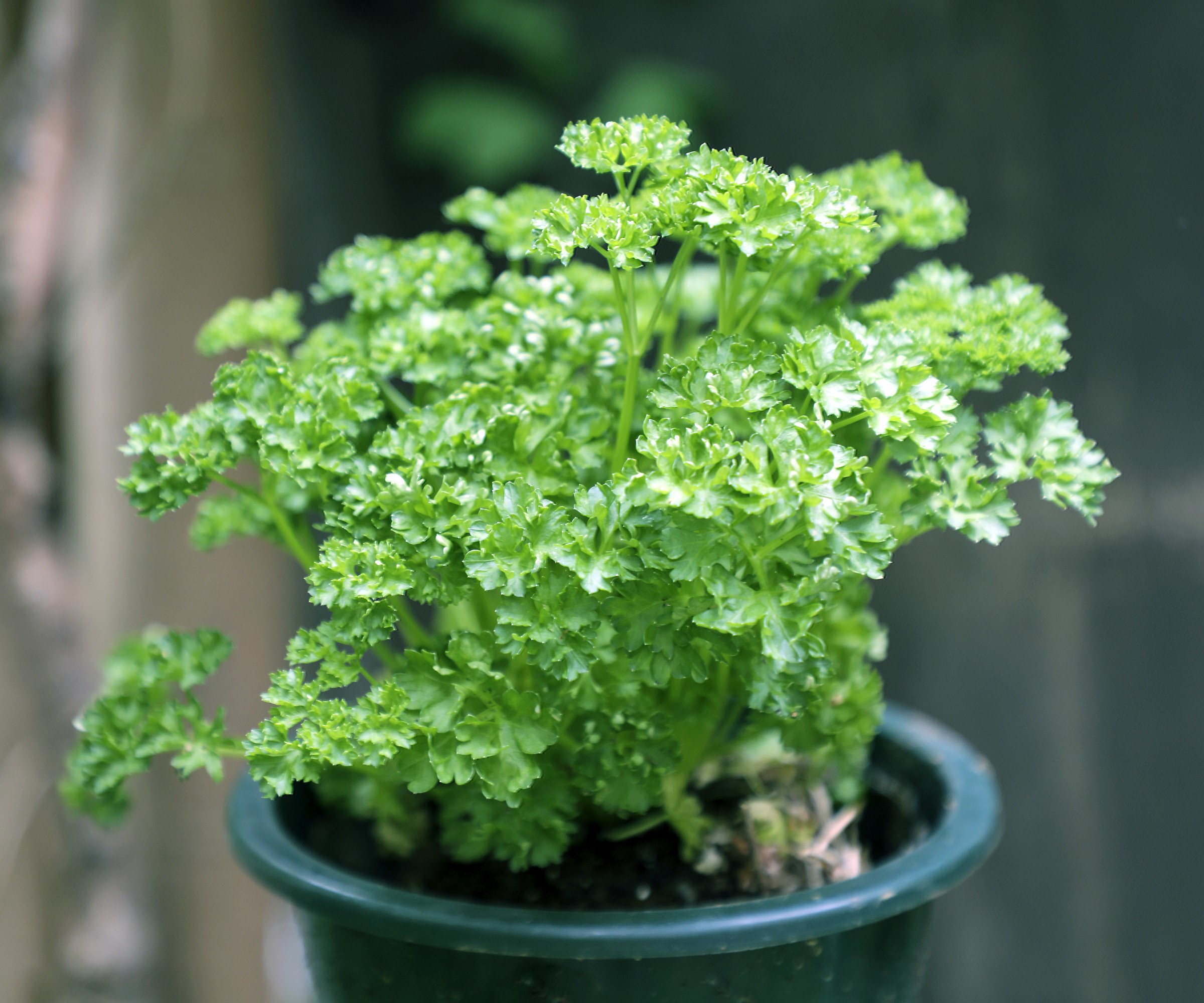How to prune parsley for a bushier plant – simple tips for success
Learn how to cut back this kitchen herb for a longer harvest and fresher leaves


Learning how to grow parsley is simple enough. It's a resilient herb that loves sunshine, partial shade and moist soil. It can be sown from seed in milder months, and is also a great herb to grow indoors.
If you're wondering how to prune parsley, the good news is the more you snip, the better your plant will be. By following a few simple steps you can ensure your plant continues to provide you with healthy, bushy leaves for use in cooking, soups and salads.
Parsley is a delicious addition to any kitchen garden, thanks to its versatility as a garnish and ingredient in a huge range of dishes. It pairs especially well with meat and fish, and is often chopped and added into dressings and sauces.

Simple tips on how to prune parsley so it keeps growing
This culinary herb will continue giving if you keep up the pruning.

Keep snipping those stems
Like many herbs, parsley actually enjoys being trimmed regularly, as this is what encourages new growth.
Every time you plan to use some parsley, snip off a few stems from the outside of the plant instead of taking just the leaves. It's also a benefit to tidy up the plant. You can encourage new growth by snipping off any lower leaves that start to turn yellow.
Be confident and trim at the base of the stem, close to the soil. If cut from the top of the stem, parsley will slow production of new leaves.
Design expertise in your inbox – from inspiring decorating ideas and beautiful celebrity homes to practical gardening advice and shopping round-ups.
'Always use clean and sharp pruning shears or scissors to prune parsley to ensure you cut the stems rather than tearing them,' advises Drew Swainston, Content Editor at Homes & Gardens, and professional kitchen gardener.
You'll find a similar approach can work when considering how to harvest cilantro and how to prune basil so they keep growing.

Cut parsley back regularly
Parsley should be cut back regularly to increase its yield, so even if you're not planning to use the herb all the time, it's still recommended to give it a little snip every couple of weeks.
New leaves will grow back quickly, so the more often you cut, the bushier your plant will become as it keeps producing throughout the season.
'Focus your attention on removing older and longer stems, allowing the younger ones to come through in their place,' says Drew Swainston. 'Look to remove stems around the outer edges and take the leaf together with the stem, leaving only an inch of stem remaining at the base.'

Drew qualified as a journalist before studying for a horticulture qualification, after which he worked as a professional gardener for several years, specializing in kitchen gardening. He's now bringing his expertise and passion to Homes & Gardens as a member of our team.

Don't worry if it goes to seed
Parsley is one of the best herbs to grow in your garden for its culinary abilities. It's also a biennial, so it will go to seed in its second year of growth.
If your parsley plant is bolting, you have a few options: either pinch off the majority of the flowers to prolong leaf growth, or pull the plant up entirely.
You can remove flowerheads to extend the cropping life of the plants. At that point you can store the seed heads in a paper bag and save them for planting next season.
If you don't manage to save your seeds in time, there are lots of parsley seed varieties available from Walmart, such as these ones.
Even though parsley bolts, it won't affect the flavor of the leaves themselves, so it's fine to let it go to seed and wait for some fresh growth next spring.

FAQs
Can I over-prune parsley?
Drew Swainston, Content Editor at Homes & Gardens, and professional kitchen gardener, advises to prune parsley off the plant regularly, but beware not to take too many leaves. 'You need to leave enough so that the plant can recover and continue to photosynthesise,' he says. 'Through regular pruning parsley plants will keep growing and producing new and healthy leaves.'
Parsley is one of those versatile herbs that can be grown in a variety of locations to suit you - it's great if you enjoy growing herbs in a greenhouse, and can do equally well in pots or raised beds. Simply keep snipping the stems to enjoy bumper culinary crops.

Freelance writer and author Flora Baker is a keen amateur gardener and houseplant enthusiast. Her small garden in South London is a constant work in progress as she gets to grips with snail prevention, DIY trellises and what to plant in shady spots overrun with ivy.